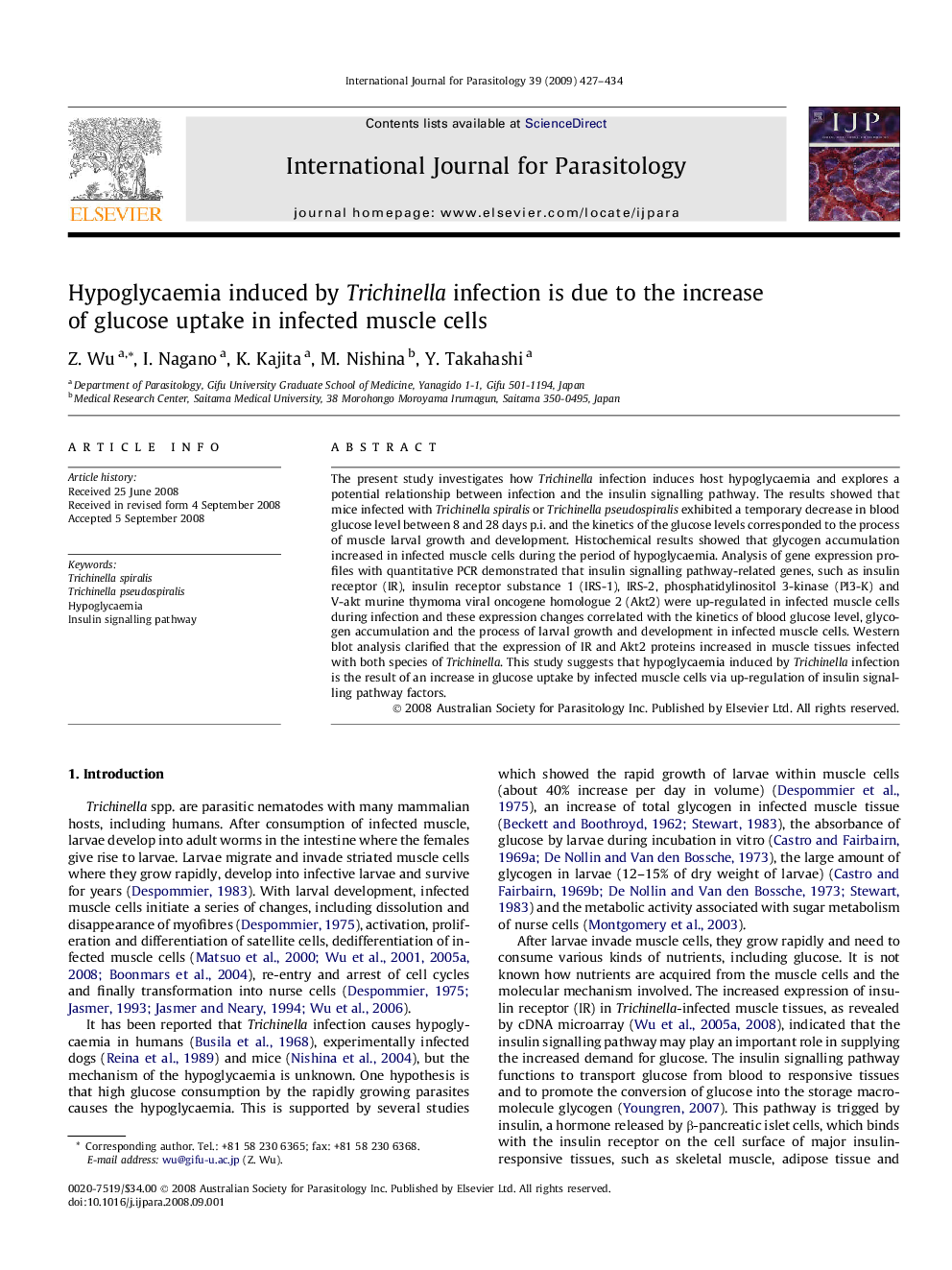| Article ID | Journal | Published Year | Pages | File Type |
|---|---|---|---|---|
| 2436857 | International Journal for Parasitology | 2009 | 8 Pages |
Abstract
The present study investigates how Trichinella infection induces host hypoglycaemia and explores a potential relationship between infection and the insulin signalling pathway. The results showed that mice infected with Trichinella spiralis or Trichinella pseudospiralis exhibited a temporary decrease in blood glucose level between 8 and 28 days p.i. and the kinetics of the glucose levels corresponded to the process of muscle larval growth and development. Histochemical results showed that glycogen accumulation increased in infected muscle cells during the period of hypoglycaemia. Analysis of gene expression profiles with quantitative PCR demonstrated that insulin signalling pathway-related genes, such as insulin receptor (IR), insulin receptor substance 1 (IRS-1), IRS-2, phosphatidylinositol 3-kinase (PI3-K) and V-akt murine thymoma viral oncogene homologue 2 (Akt2) were up-regulated in infected muscle cells during infection and these expression changes correlated with the kinetics of blood glucose level, glycogen accumulation and the process of larval growth and development in infected muscle cells. Western blot analysis clarified that the expression of IR and Akt2 proteins increased in muscle tissues infected with both species of Trichinella. This study suggests that hypoglycaemia induced by Trichinella infection is the result of an increase in glucose uptake by infected muscle cells via up-regulation of insulin signalling pathway factors.
Related Topics
Life Sciences
Immunology and Microbiology
Parasitology
Authors
Z. Wu, I. Nagano, K. Kajita, M. Nishina, Y. Takahashi,
